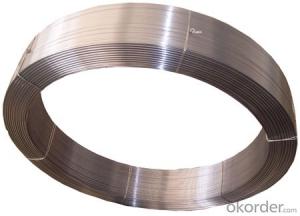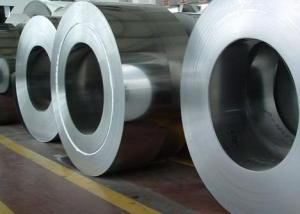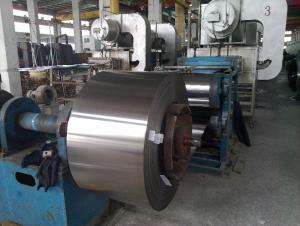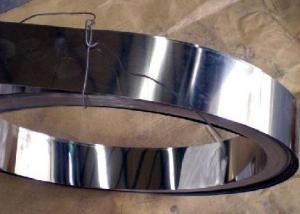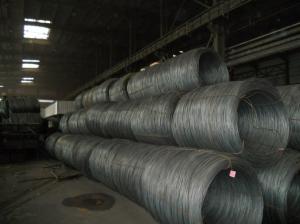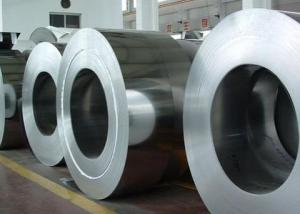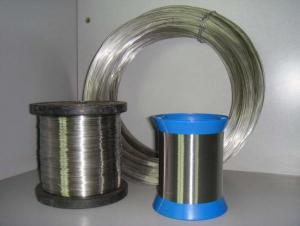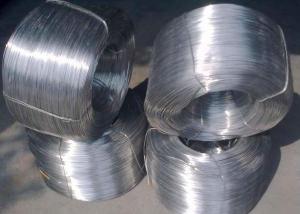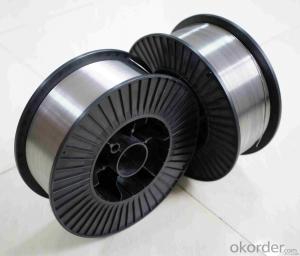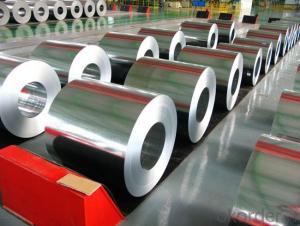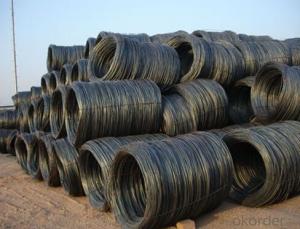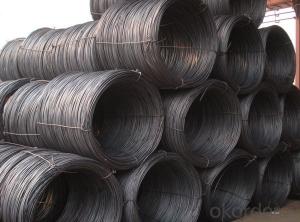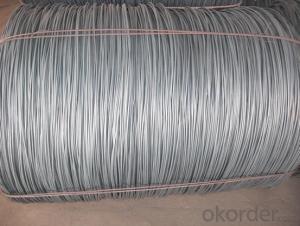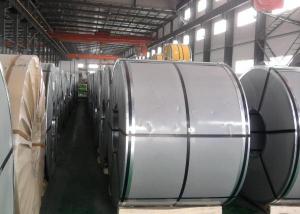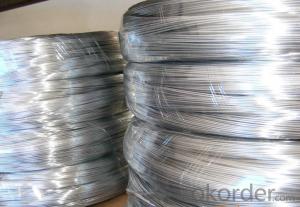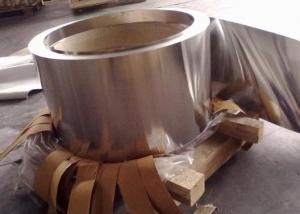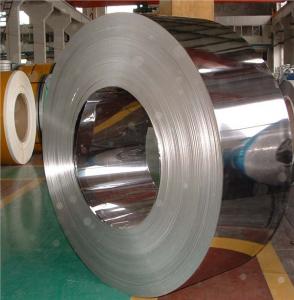Rebar Coil Wire Rod 5.5mm-14mm for Building Structure
- Loading Port:
- Tianjin
- Payment Terms:
- TT or LC
- Min Order Qty:
- 100 m.t.
- Supply Capability:
- 1000 m.t./month
OKorder Service Pledge
OKorder Financial Service
You Might Also Like
Rebar Coil Wire Rod 5.5mm-14mm for Building Structure
Main Structure of Rebar Coil Wire Rod
Standard: AISI, ASTM, BS, DIN, GB
Grade: HRB400
Diameter: 5.5mm-10mm
steel grade: hrb400 , hrb500, gr.60 , hrb335,q235 q255 q275
weight: 1.6-1.9ton /coil
packing: by coil with steel wire
application: building construction
Description for Rebar Coil Wire Rod
Type | rebar coil wire rod |
Steel Grade | Hrb400 , hrb500, gr.60 ,q235 ,q255,q275,sae1006,sae1008 |
Your required chemical composition. | |
Size | 5.5mm-10mm |
Unit weight | 1.6-1.9tons/coil |
Application | Building/project construction |
Packing | In coil with steel strip ,in bulk . |
MOQ | 1000tons(500for trial order ). |
Delivery Time | 25days . |
Payment | T/T , West Union , Cash , L/C. |
Trade Terms | FOB, CFR, CIF ,EXW |
Trans terms | FIO FILO FLT |
Loading port | Caofeidian /Jingtang/Tianjin,China |
Data of Chemical Composition for Wire Rod
Content | C% | Mn% | Si% | Cr% | Ni% | S% | P% | Cr% |
HRB400 | 0.14-0.22 | 0.40-0.65 | 0.05-0.15 | 0.30max | 0.30max | 0.050 | 0.040 | 0.30min |
HRB400E | 0.14-0.22 | 0.40-0.65 | 0.15-0.30 | 0.30max | 0.30max | 0.050 | 0.040 | 0.30min |
HRB500 | 0.28-0.37 | 0.50-1.00 | 0.05-0.15 | 0.30max | 0.30max | 0.050 | 0.040 | 0.30min |
HRB500E | 0.28-0.37 | 0.50-1.00 | 0.15-0.30 | 0.30max | 0.30max | 0.050 | 0.040 | 0.30min |
FAQ
Why should you choose us:
Stable quality ----continous casting hot rolled production techenic, strictly quality control system.
Lower price -------Not the cheapest but the lowest price at the same quality .
Good service -----Satisfactory service within 24hours.
Delivery time ------15-25days for the mass production .
Discount---------------discount base on monthly large quantity purchase in long term.
Picture
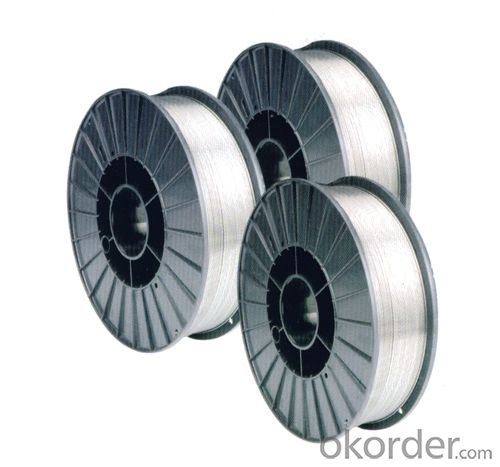
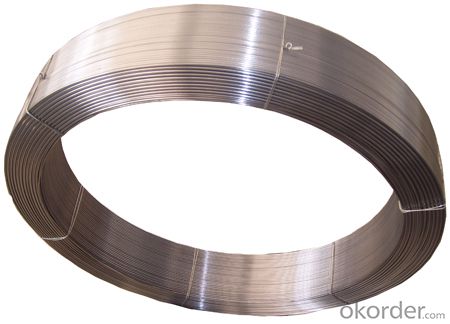
- Q: What are the different types of stainless steel wire used for suspension bridges?
- There are several types of stainless steel wire commonly used for suspension bridges. These types include 304 stainless steel wire, 316 stainless steel wire, and 2205 duplex stainless steel wire. 304 stainless steel wire is a popular choice for suspension bridges due to its excellent corrosion resistance and versatility. It is composed of 18% chromium and 8% nickel, which helps it resist oxidation and corrosion in various environments. This type of stainless steel wire is often used for the main cables and hangers in suspension bridges. 316 stainless steel wire is another commonly used type for suspension bridges. It contains 16-18% chromium, 10-14% nickel, and 2-3% molybdenum, which enhances its corrosion resistance, especially in marine and chloride-rich environments. This type of stainless steel wire is often used for the cables and support structures in suspension bridges that are exposed to harsh conditions. 2205 duplex stainless steel wire is a type of stainless steel that combines the best properties of austenitic and ferritic stainless steels. It is composed of 22% chromium, 5% nickel, and 3% molybdenum, which provide excellent strength, corrosion resistance, and resistance to stress corrosion cracking. This type of stainless steel wire is often used for the cables and anchorages in suspension bridges, as it can withstand heavy loads and harsh environments. In summary, the different types of stainless steel wire used for suspension bridges include 304 stainless steel wire, 316 stainless steel wire, and 2205 duplex stainless steel wire. The choice of the specific type depends on factors such as the bridge's location, exposure to corrosive agents, and required strength.
- Q: How does stainless steel wire compare to galvanized wire?
- Stainless steel wire is generally considered to be more durable, corrosion-resistant, and aesthetically pleasing compared to galvanized wire. It is able to withstand harsh weather conditions and has a longer lifespan. On the other hand, galvanized wire is more economical and commonly used for applications where corrosion resistance is not a primary concern.
- Q: What are the different types of stainless steel wire for different levels of resistance to creep?
- A variety of stainless steel wires are available with different levels of resistance to creep, which refers to the gradual deformation of a material under constant stress over time, particularly at high temperatures. The types of stainless steel wire can be classified into three main groups based on their resistance to creep: 1. Austenitic Stainless Steel Wire: Austenitic stainless steel wires, such as grade 304 and grade 316, exhibit excellent resistance to creep. These wires remain stable at high temperatures and can endure prolonged stress without significant deformation. They find common usage in applications that necessitate high resistance to creep, such as aerospace, chemical processing, and nuclear power plants. 2. Ferritic Stainless Steel Wire: Ferritic stainless steel wires, like grade 430, offer moderate resistance to creep. Although not as resistant as austenitic stainless steel, they still perform satisfactorily under certain conditions. Ferritic stainless steel wires are frequently employed in applications with elevated temperatures that do not demand the same level of creep resistance as austenitic grades. They are commonly found in automotive exhaust systems, heat exchangers, and some architectural applications. 3. Martensitic Stainless Steel Wire: Martensitic stainless steel wires, including grades 410 and 420, possess the lowest resistance to creep among the three types. Although they are not typically utilized in applications requiring high resistance to creep, they still possess favorable mechanical properties and can be suitable for certain low-stress applications. Martensitic stainless steel wires are commonly used in cutlery, surgical instruments, and some industrial equipment. It is crucial to note that the resistance to creep of stainless steel wire can also be affected by factors such as the specific alloy composition, heat treatment, and manufacturing process. Therefore, it is essential to consult materials engineers or industry experts to determine the most appropriate stainless steel wire for a particular application based on the desired resistance to creep.
- Q: Is stainless steel wire resistant to saltwater corrosion?
- Stainless steel wire's resistance to saltwater corrosion is remarkable. Its composition includes alloying elements like chromium, which creates a protective layer on the wire's surface. This shield, called a passive film, acts as a barrier, preventing direct contact between the wire and saltwater and minimizing the chances of corrosion. Moreover, stainless steel wire boasts exceptional strength and durability, making it perfect for saltwater applications like marine structures, coastal installations, fishing gear, and seawater desalination facilities.
- Q: What are the different types of stainless steel wire used in pet enclosures?
- Pet enclosures commonly use various types of stainless steel wire due to their durability and resistance to corrosion. These types encompass: 1. The most frequently employed stainless steel wire in pet enclosures is 304 Stainless Steel Wire. It provides good corrosion resistance and can endure outdoor elements, making it suitable for both indoor and outdoor pet enclosures. 2. 316 Stainless Steel Wire, often known as marine-grade stainless steel, boasts high resistance to corrosion in marine environments. It is commonly utilized in pet enclosures situated near coastal areas or in environments with elevated moisture levels. 3. 430 Stainless Steel Wire possesses magnetic properties and exhibits lower corrosion resistance compared to 304 and 316 stainless steel. It is frequently used in indoor pet enclosures where the risk of corrosion is diminished. 4. 201 Stainless Steel Wire is often employed in cost-effective pet enclosures. Although it has lower corrosion resistance compared to other types, it can still withstand mild outdoor conditions. Selecting the appropriate stainless steel wire type for pet enclosures is crucial, taking into account their specific environment and durability requirements. Seeking guidance from professionals or pet enclosure manufacturers can aid in determining the optimal stainless steel wire type for ensuring your pet's safety and security.
- Q: Stainless steel drawing plate, polishing plate, mirror panels of the three differences
- Drawing process will to some extent lose the thickness of stainless steel plate, usually at 0.1~0.2mm. In addition, because the human body, especially the palm has a relatively strong oil and sweat secretion, stainless steel wire drawing board often hand touch will leave a more obvious fingerprints, regular scrub.
- Q: What are the different types of stainless steel wire grades for different applications?
- There are several different types of stainless steel wire grades that are used for various applications. Some common grades include 304, 316, 430, and 17-7PH. The 304 grade is a versatile option suitable for general-purpose applications, while the 316 grade offers excellent corrosion resistance, making it ideal for marine environments. The 430 grade is known for its high heat resistance and is often used in automotive exhaust systems. On the other hand, the 17-7PH grade is a precipitation-hardening stainless steel wire that is used in applications requiring high strength and durability. Overall, the choice of stainless steel wire grade depends on the specific requirements and conditions of the application.
- Q: What are the different types of stainless steel wire used in electrical resistors?
- There are primarily three types of stainless steel wire commonly used in electrical resistors: 304 stainless steel, 316 stainless steel, and 430 stainless steel. Each type has different properties and is suitable for specific applications. 304 stainless steel wire is known for its corrosion resistance and is commonly used in low-temperature applications. 316 stainless steel wire is highly resistant to corrosion and is often used in high-temperature and harsh environments. 430 stainless steel wire is magnetic and has good corrosion resistance, making it suitable for general-purpose applications.
- Q: Does stainless steel wire have magnetic properties?
- Yes, stainless steel wire does have magnetic properties.
- Q: Can stainless steel welding rod replace argon arc welding wire?
- As long as the stainless steel electrode material is the same or similar to the base metal, the electrode coating can be used as stainless steel welding wire.
Send your message to us
Rebar Coil Wire Rod 5.5mm-14mm for Building Structure
- Loading Port:
- Tianjin
- Payment Terms:
- TT or LC
- Min Order Qty:
- 100 m.t.
- Supply Capability:
- 1000 m.t./month
OKorder Service Pledge
OKorder Financial Service
Similar products
Hot products
Hot Searches
Related keywords
